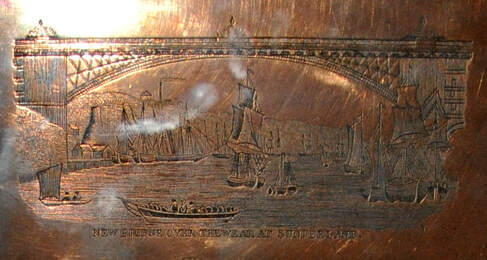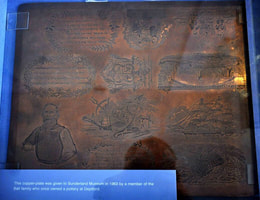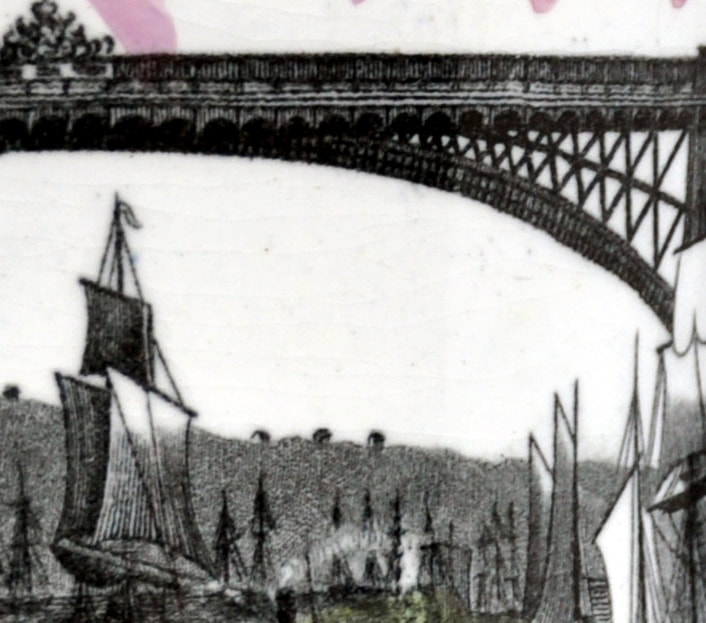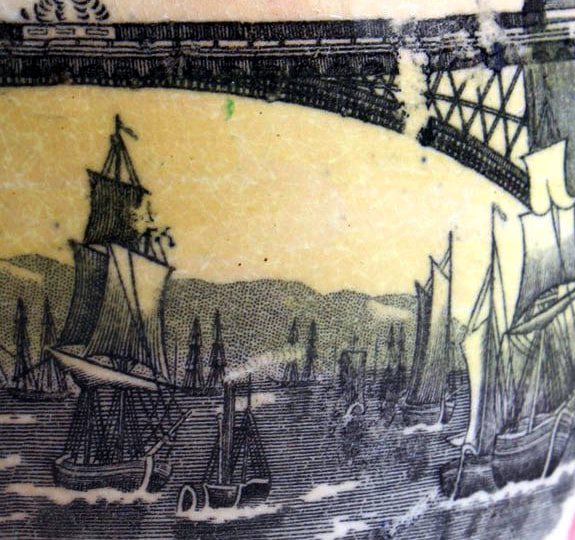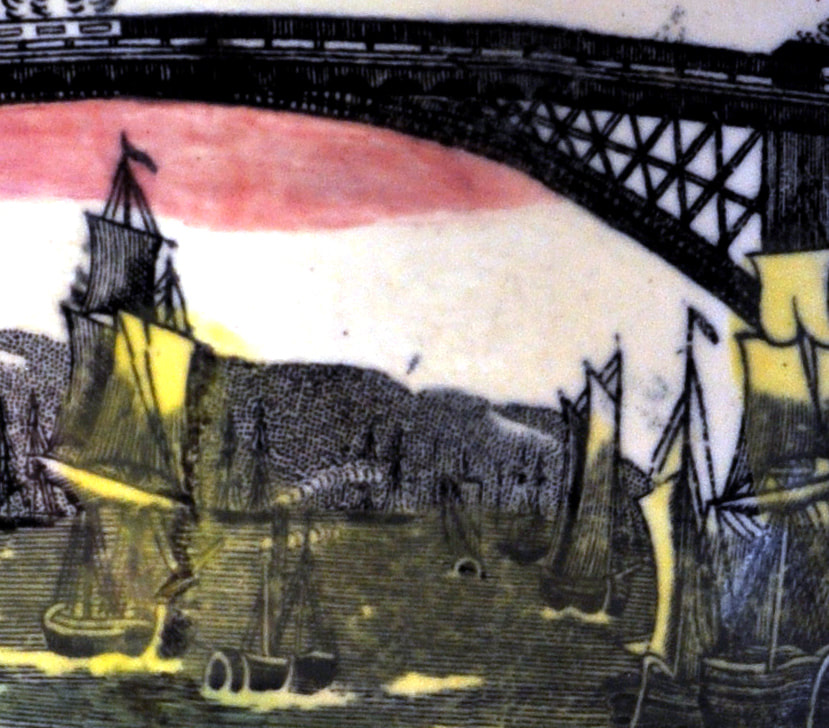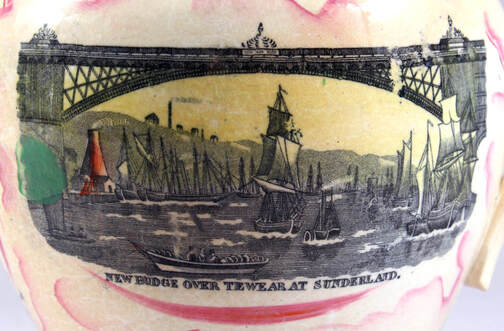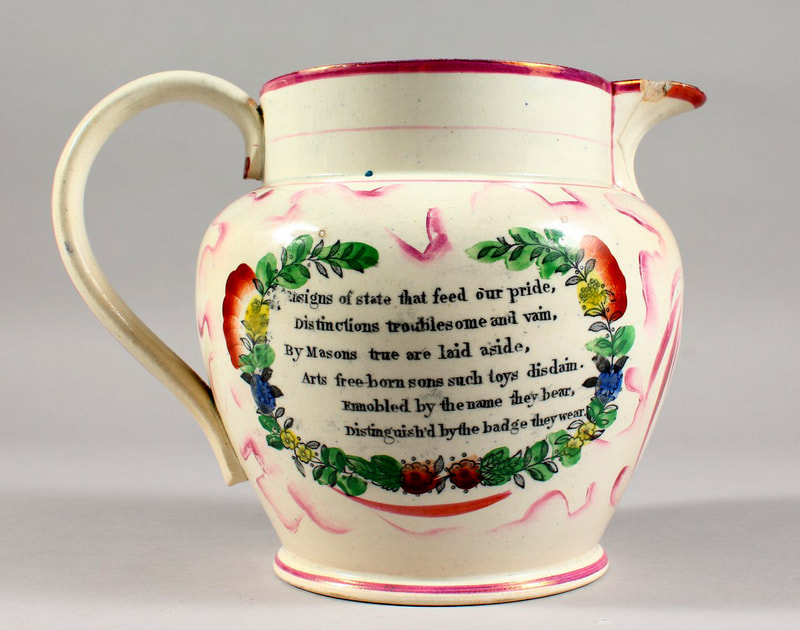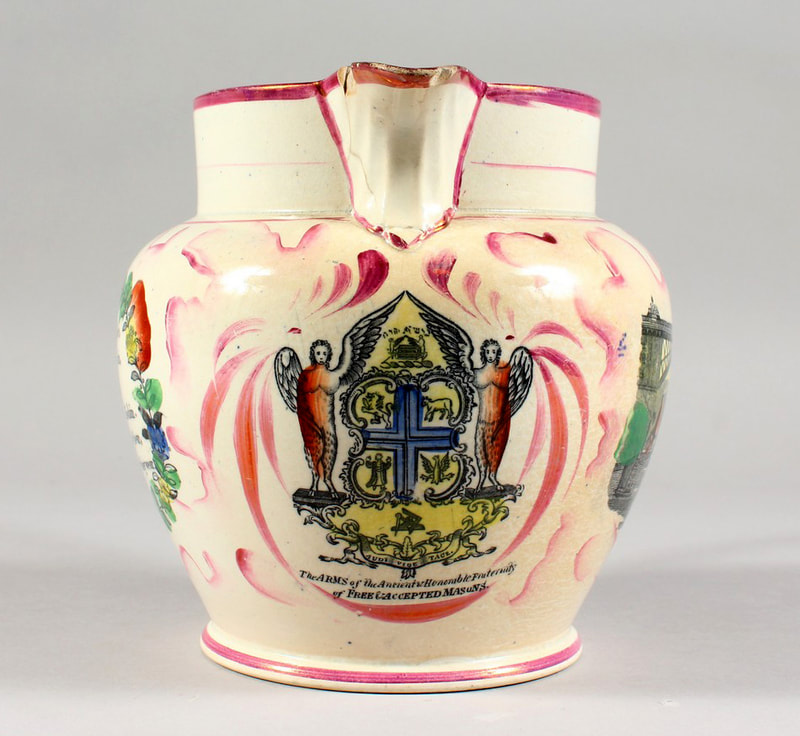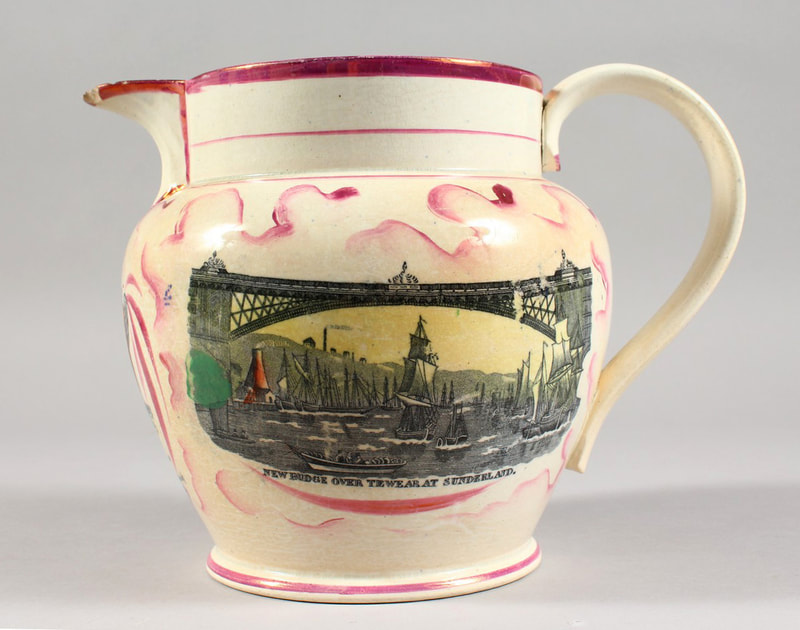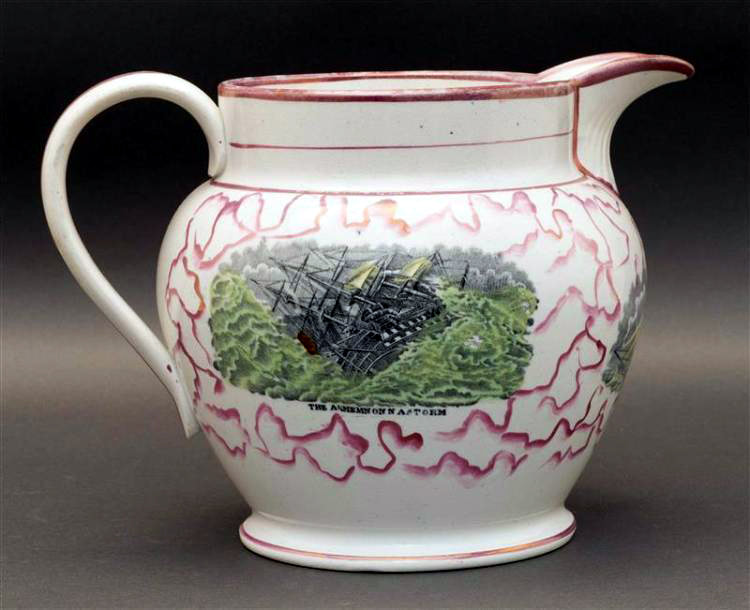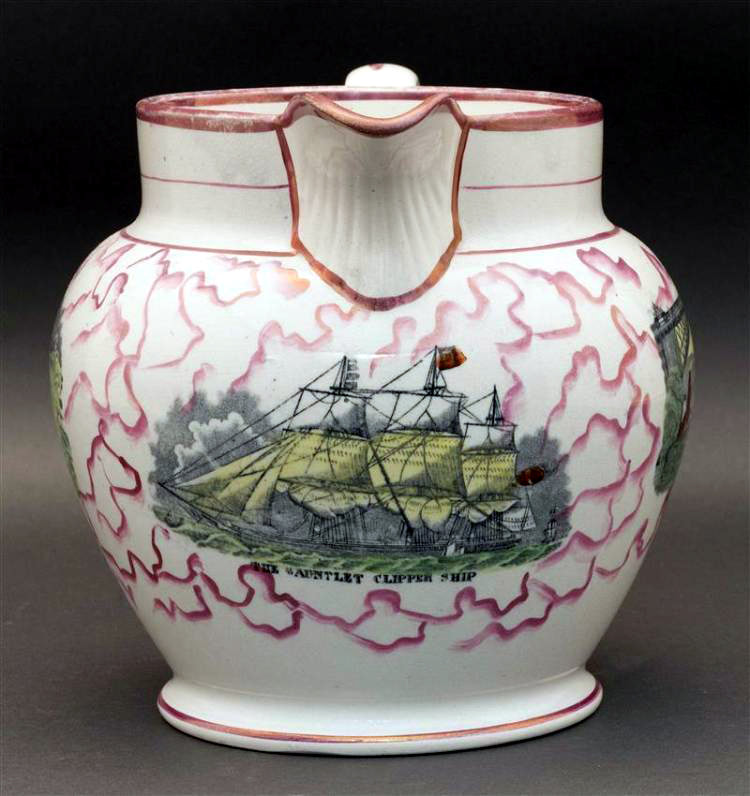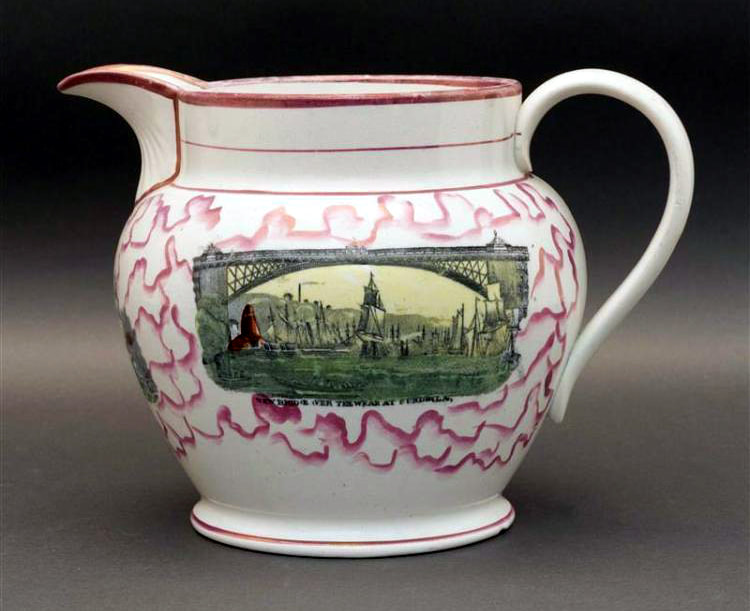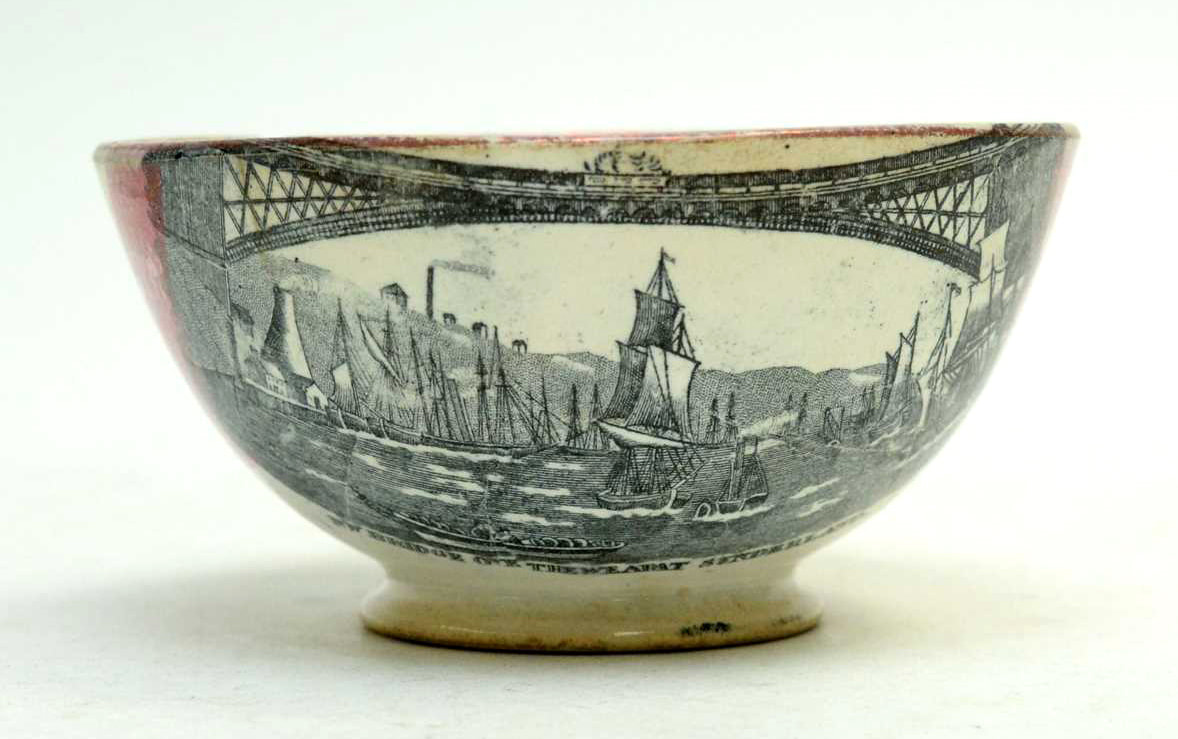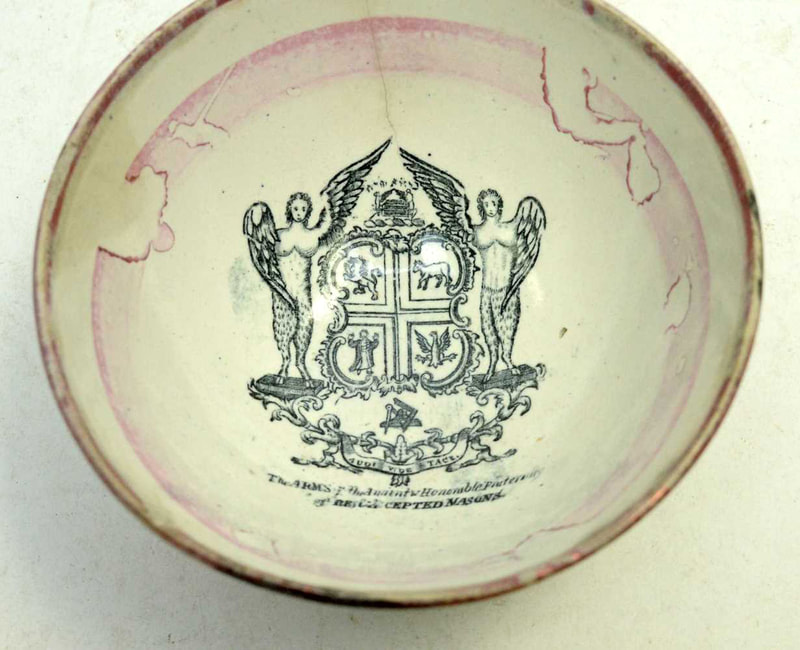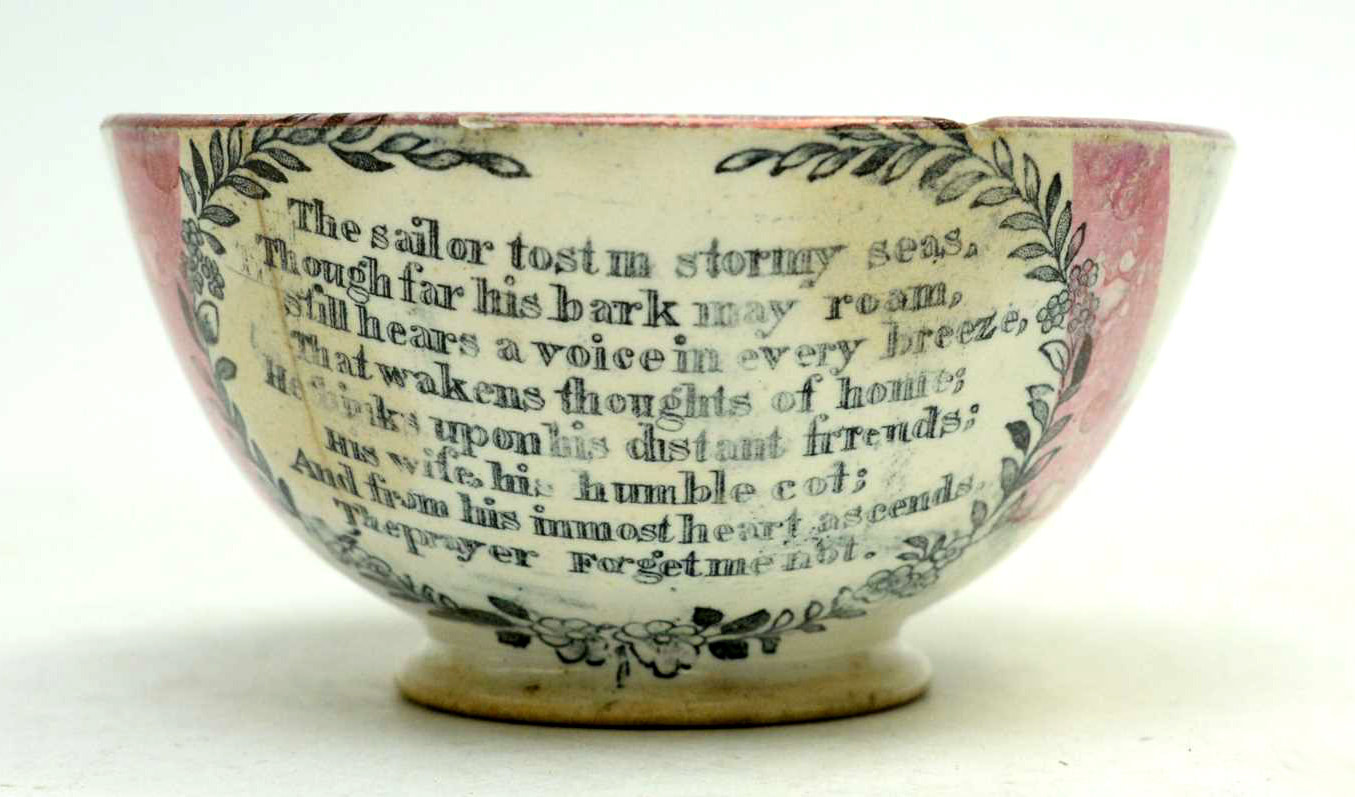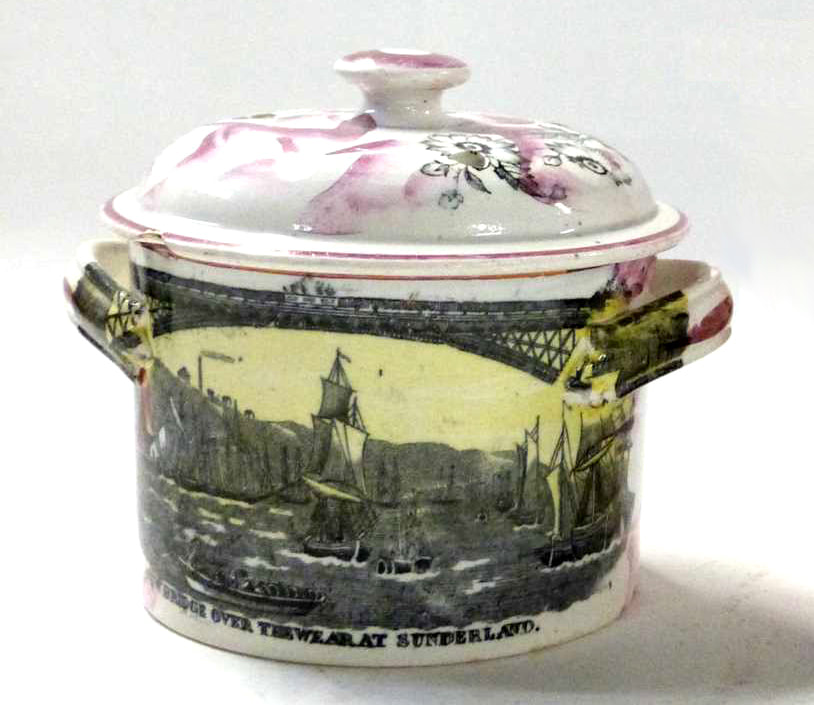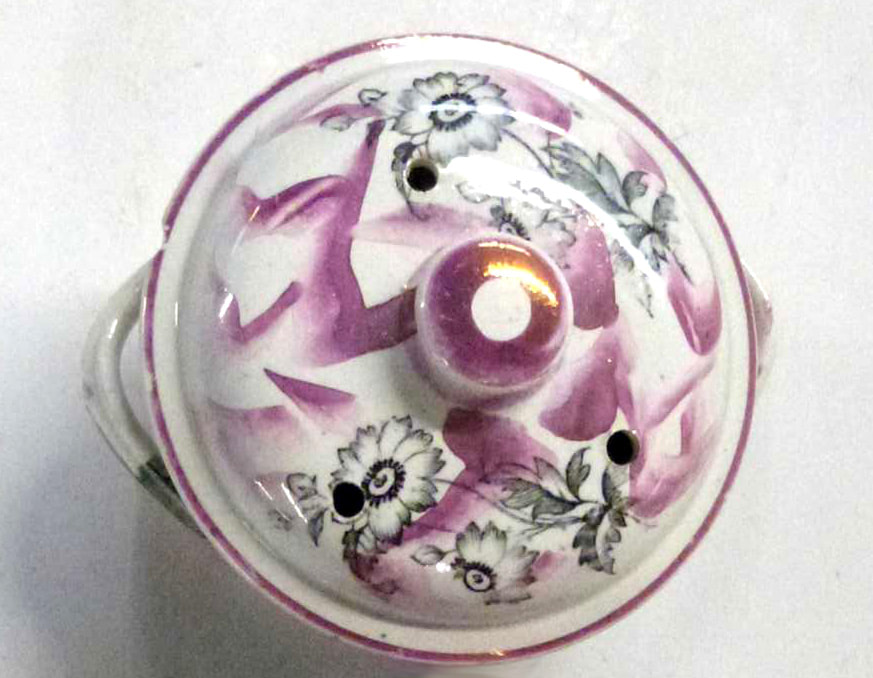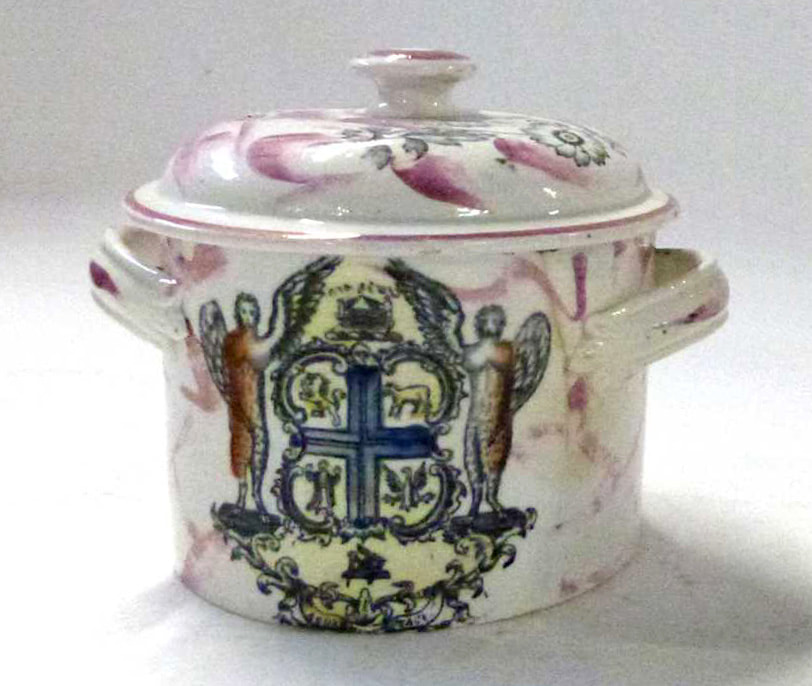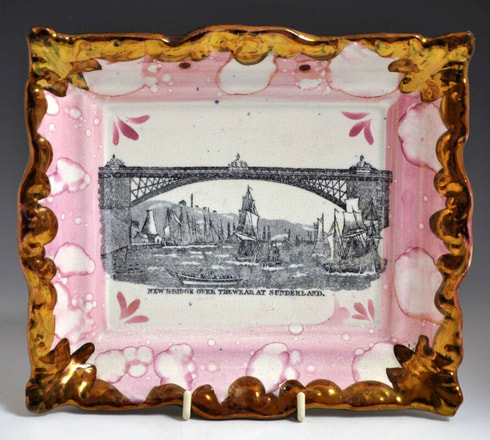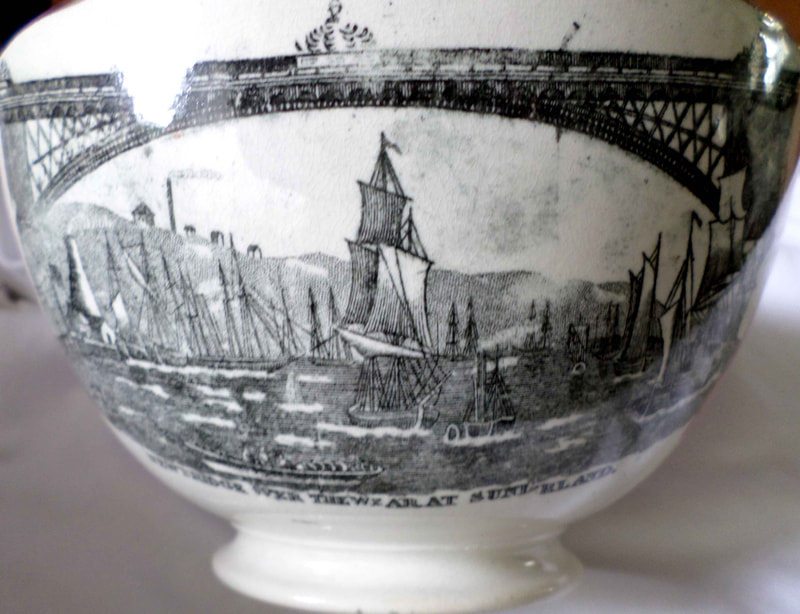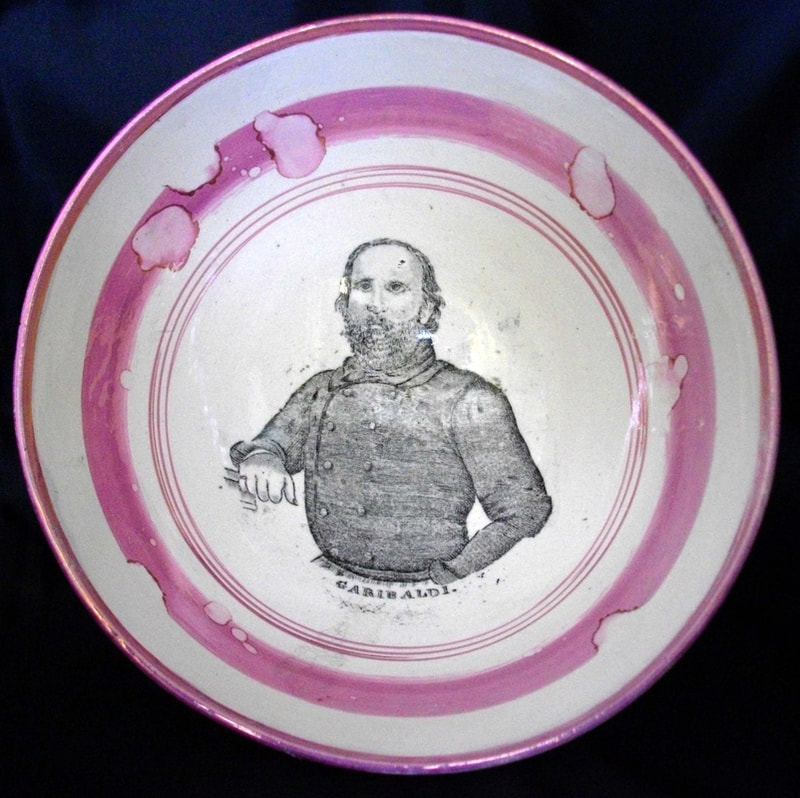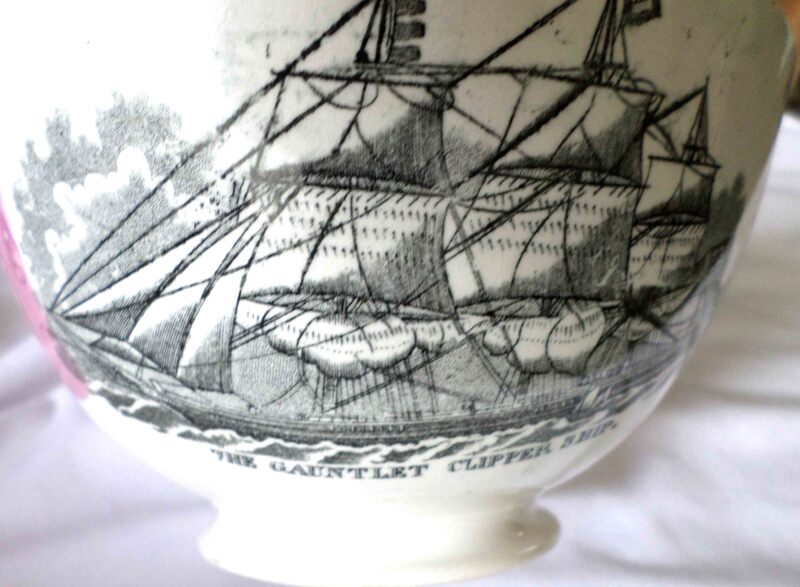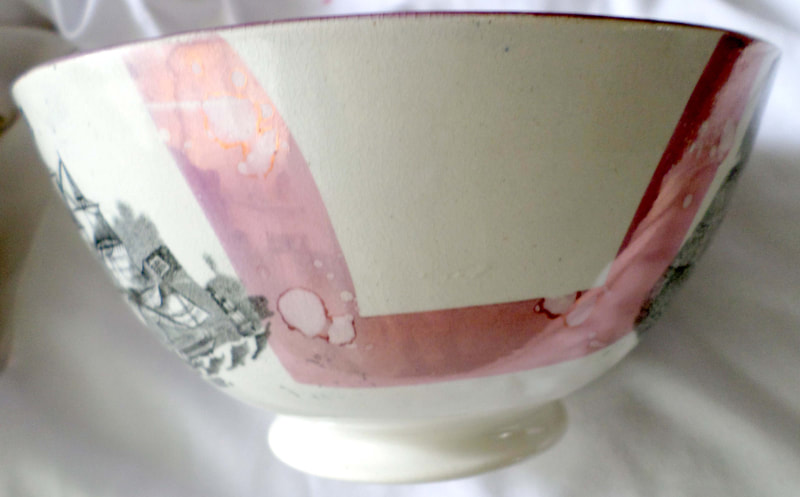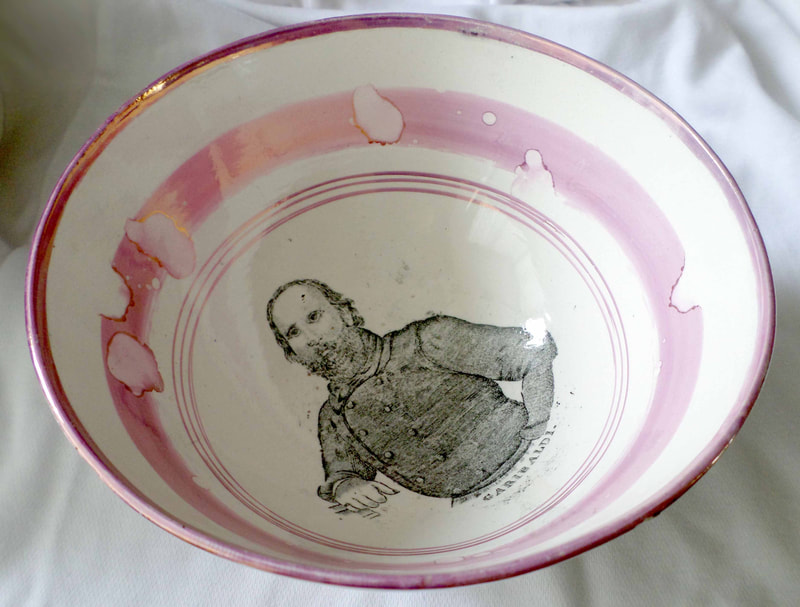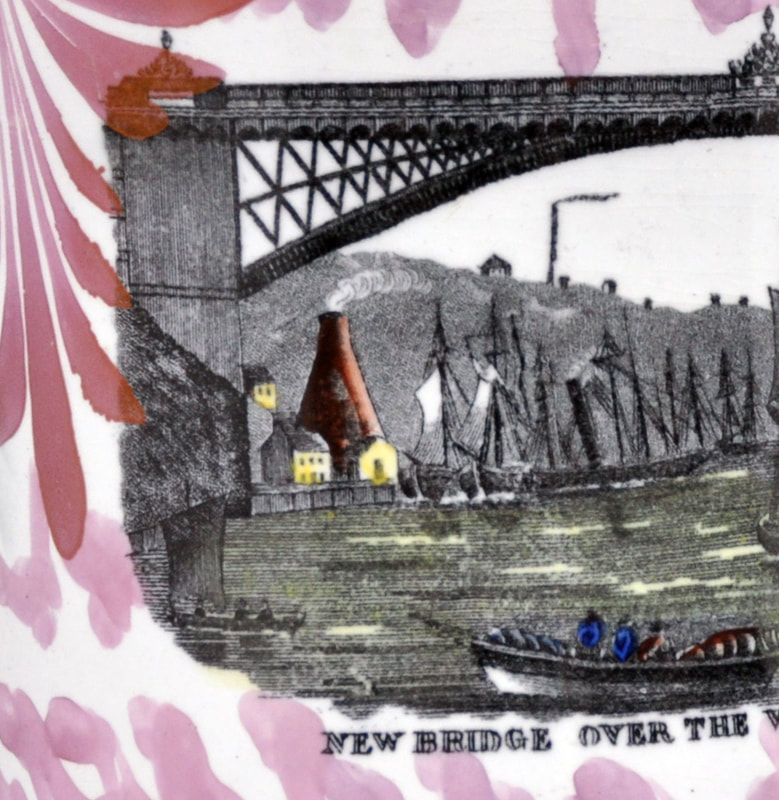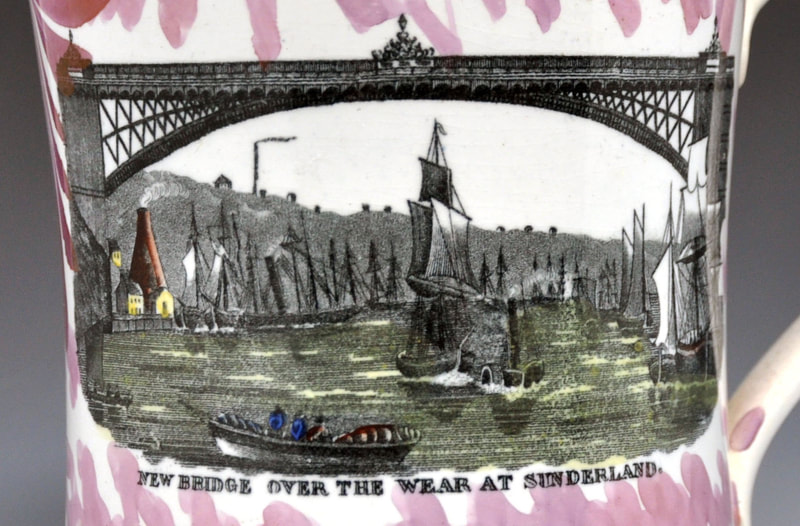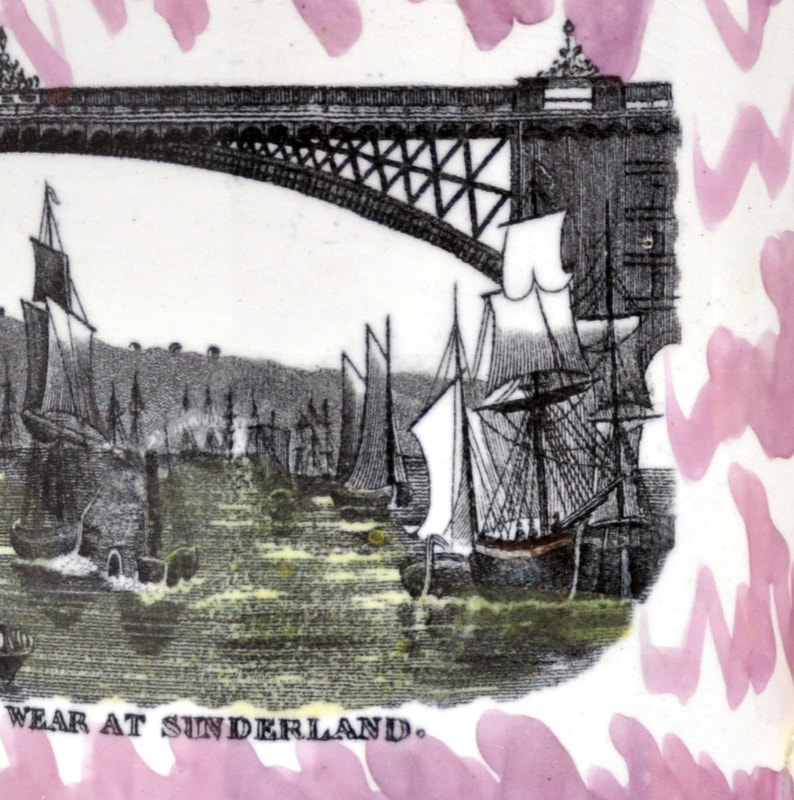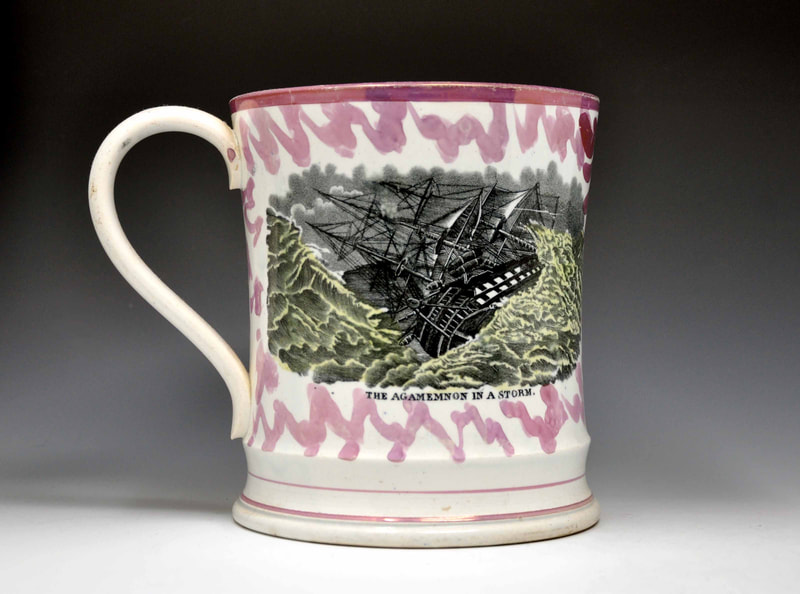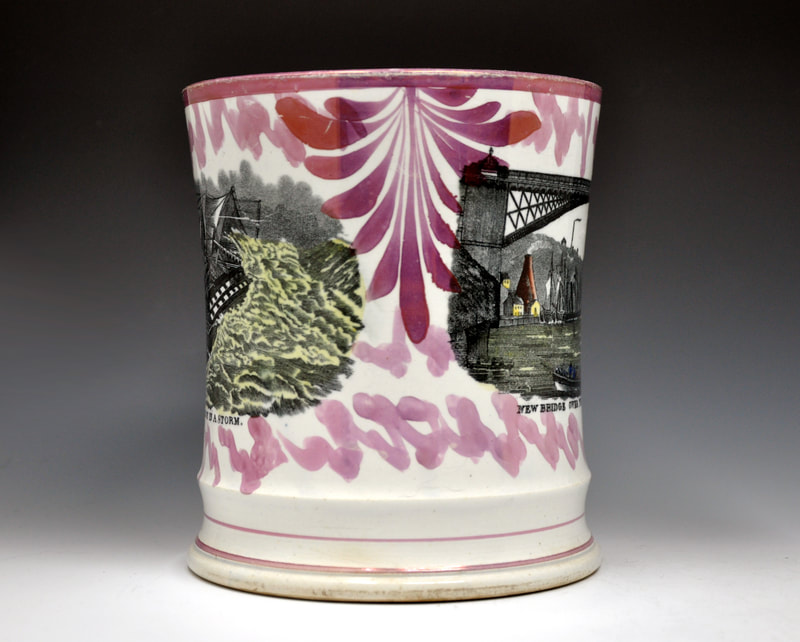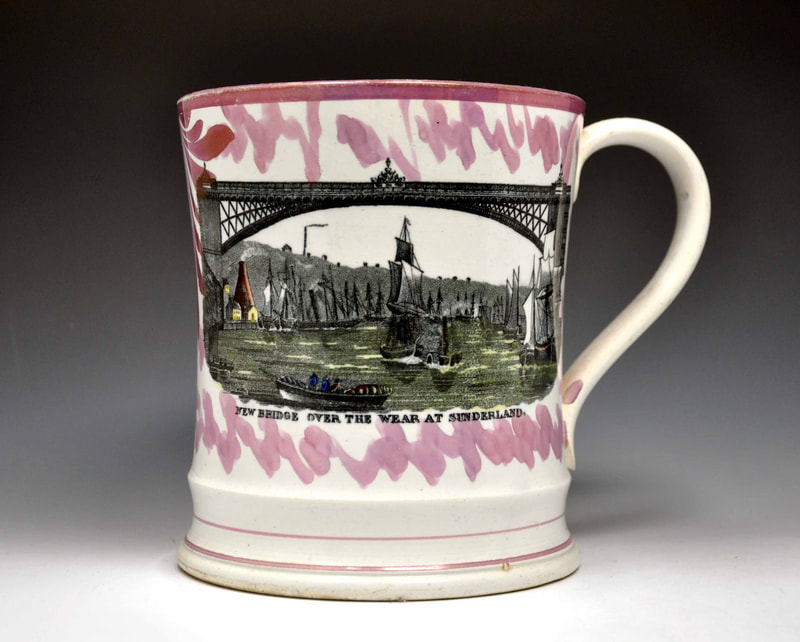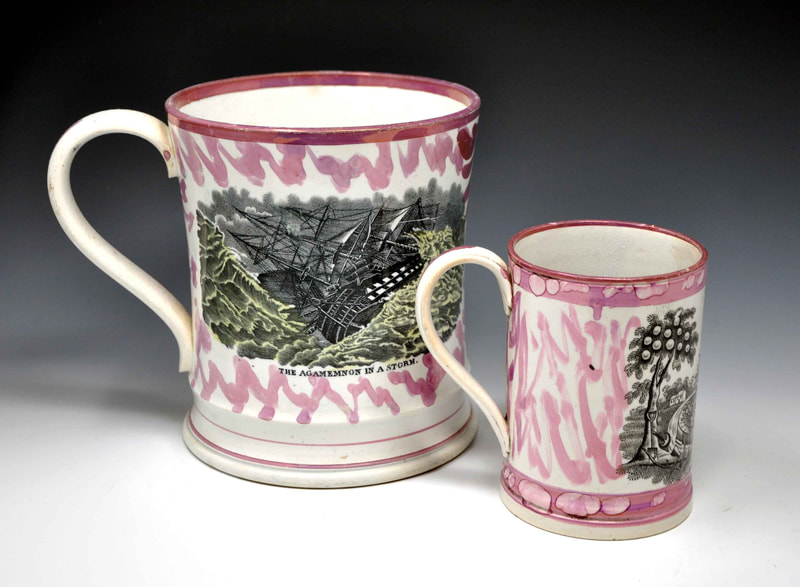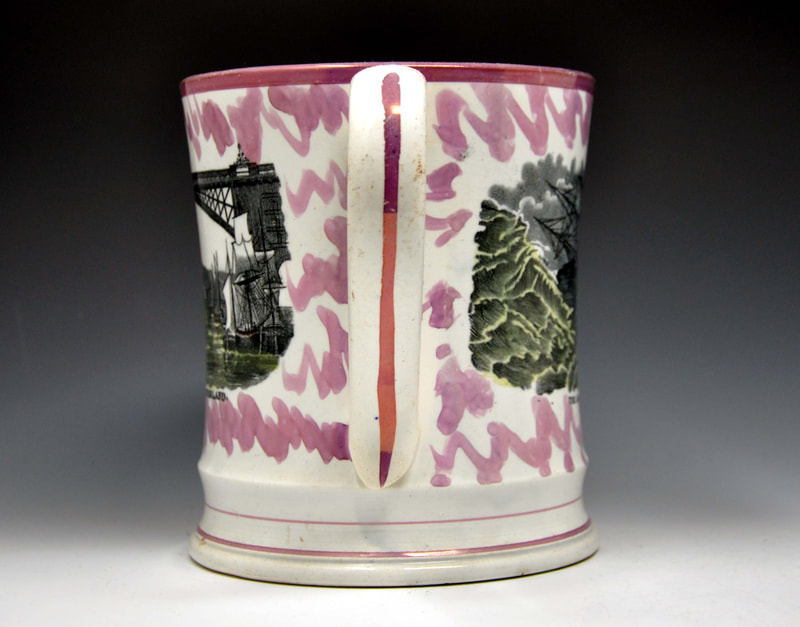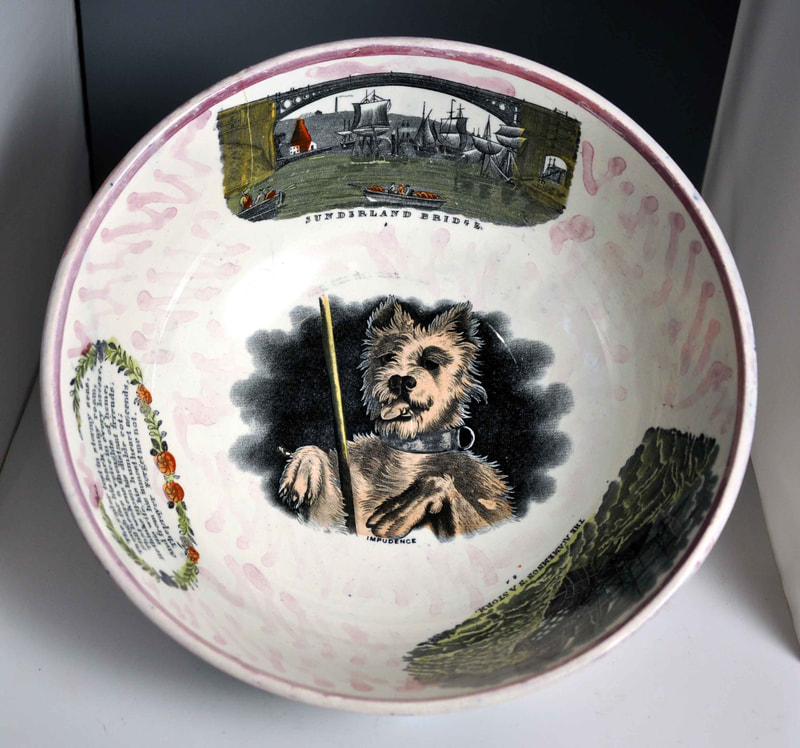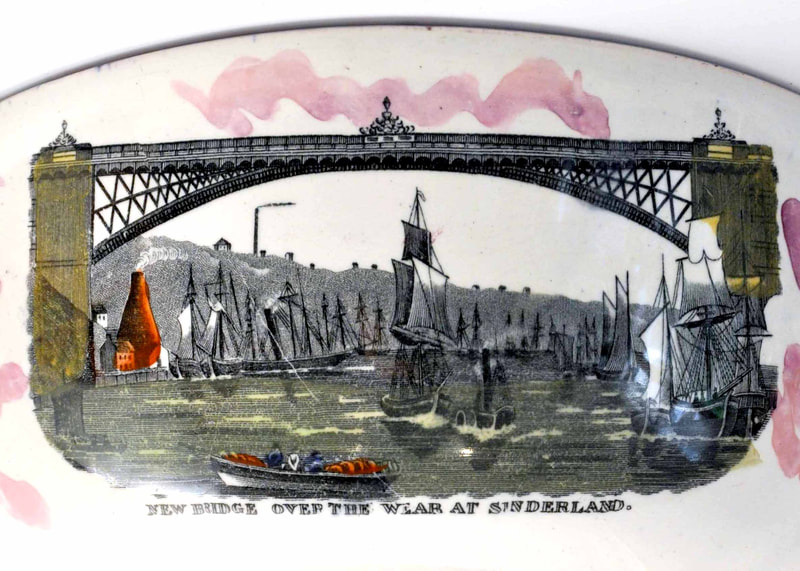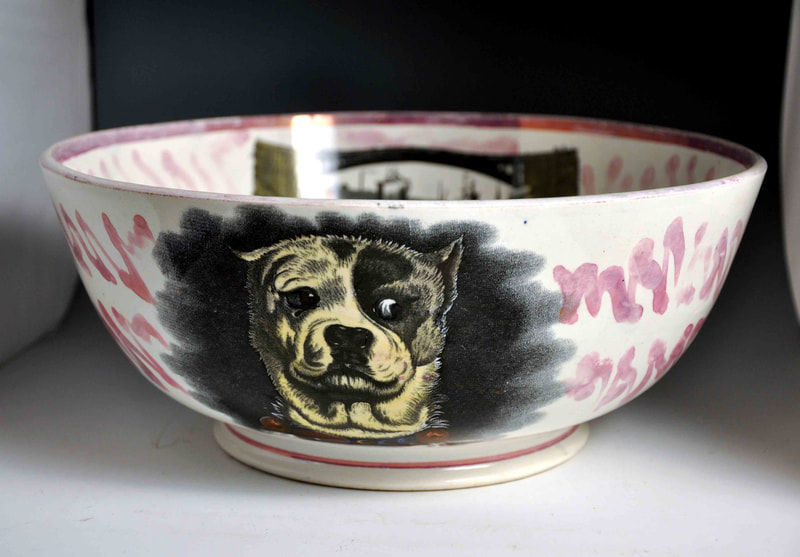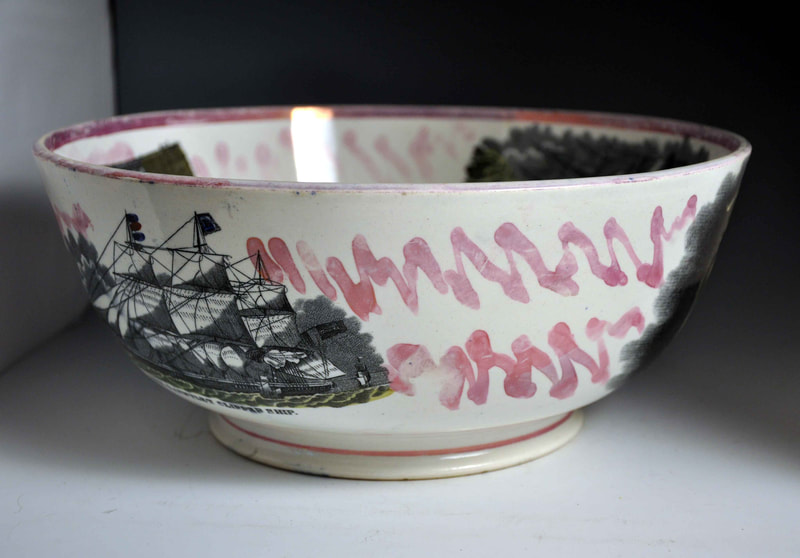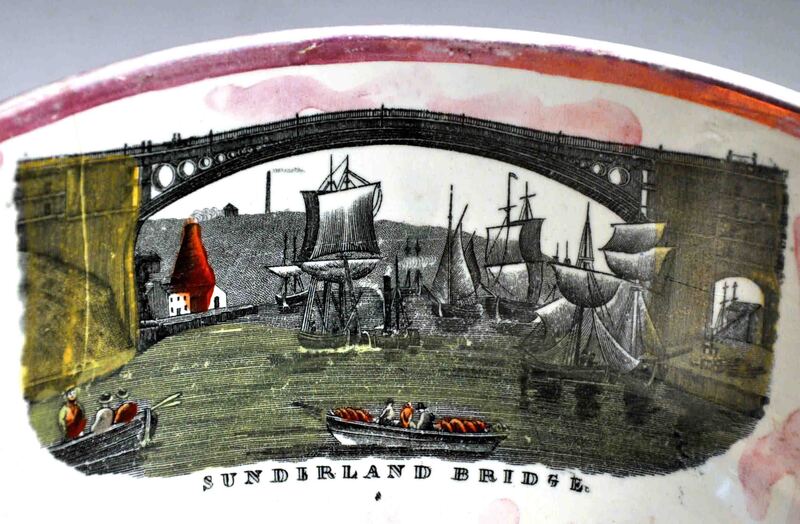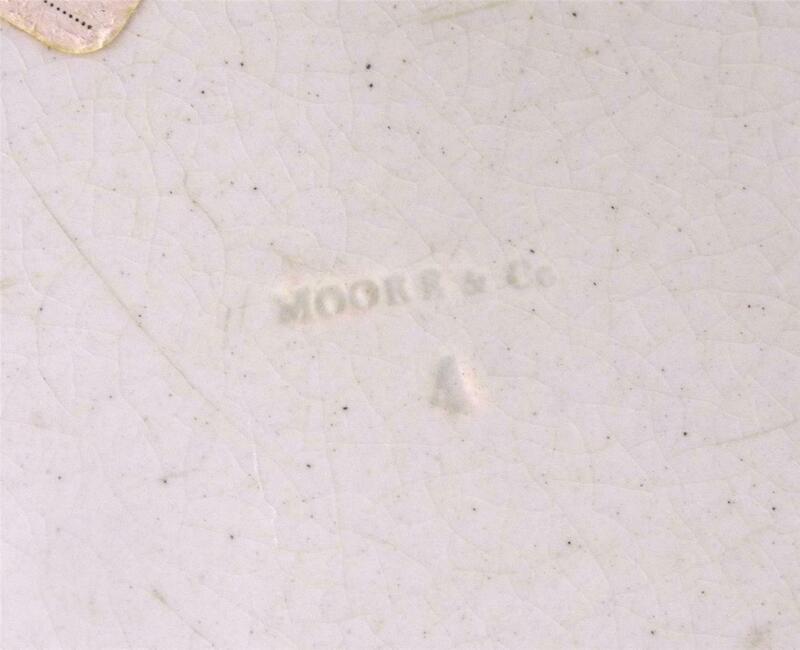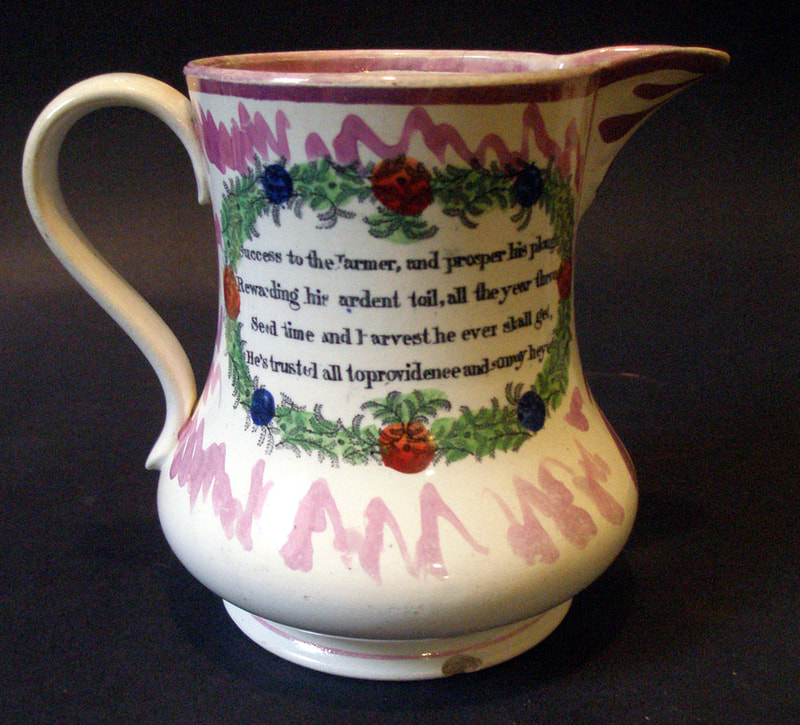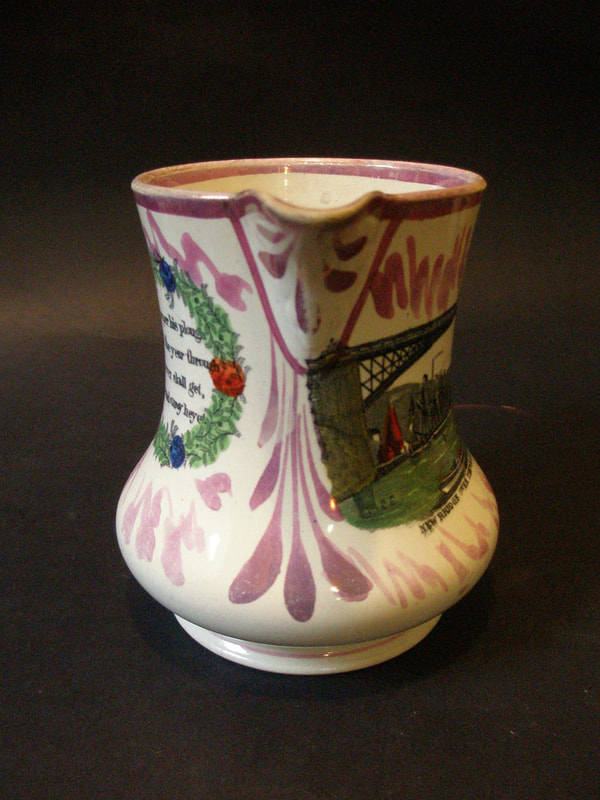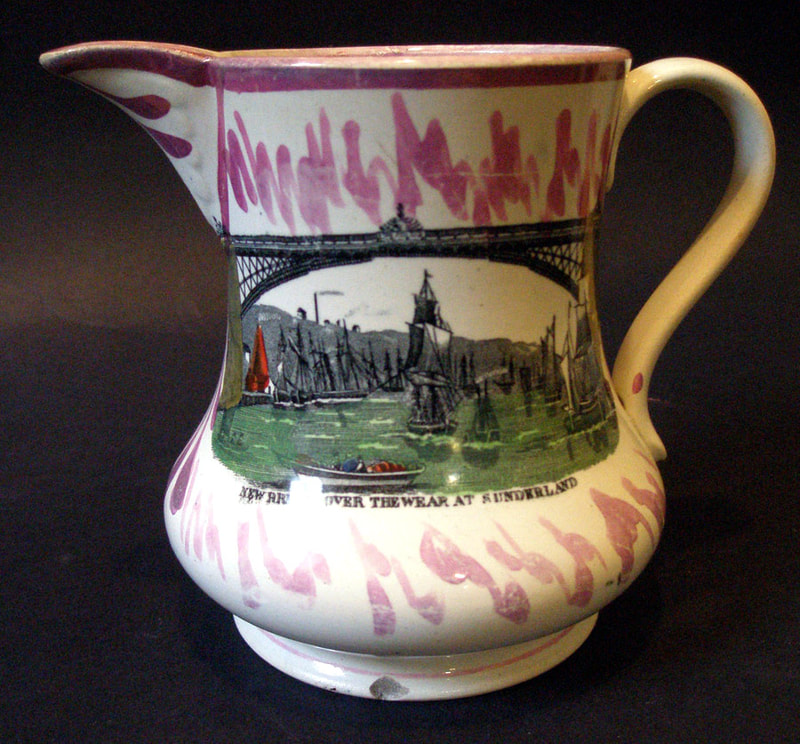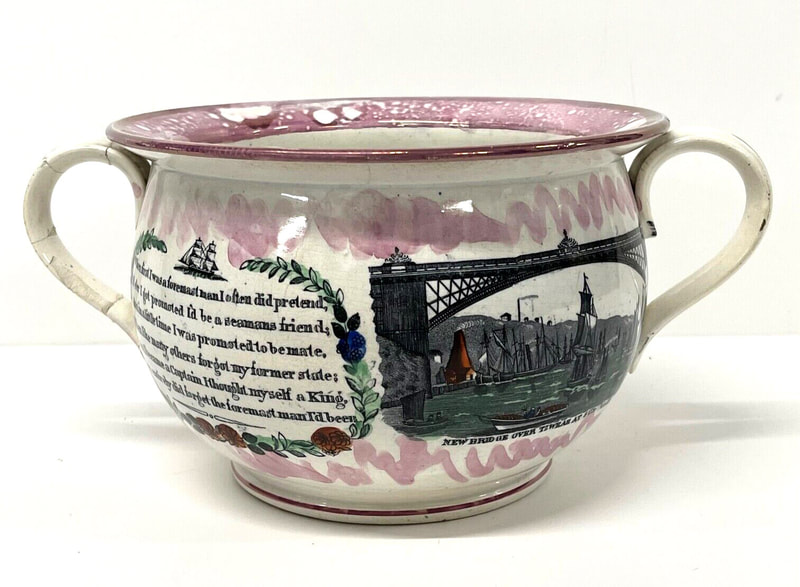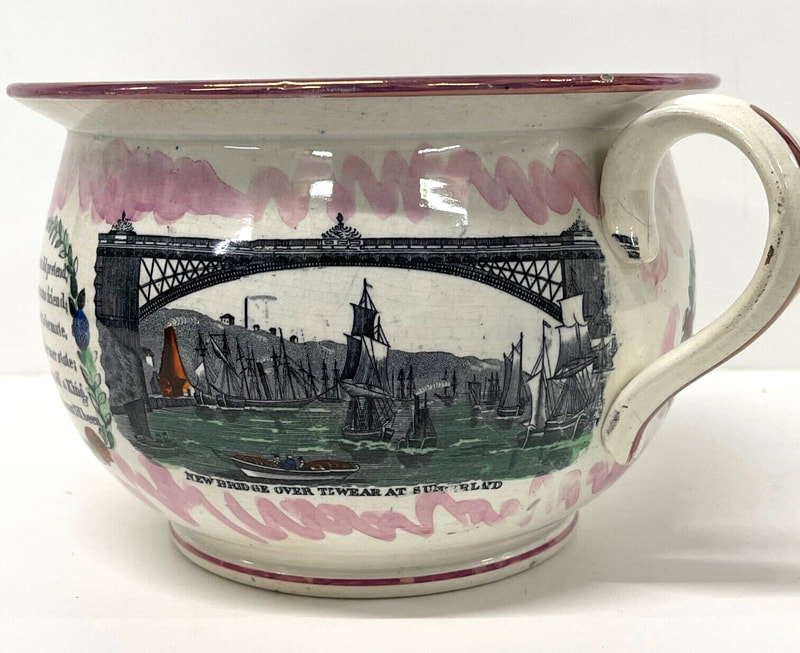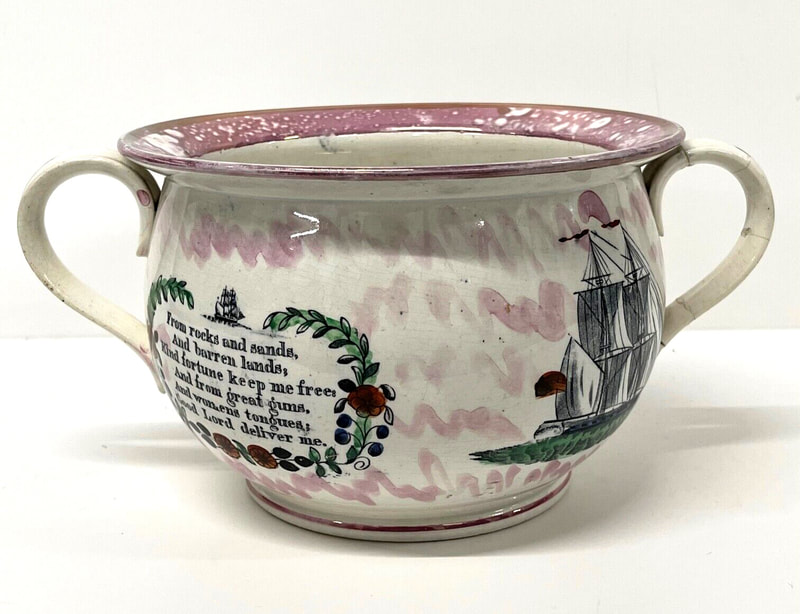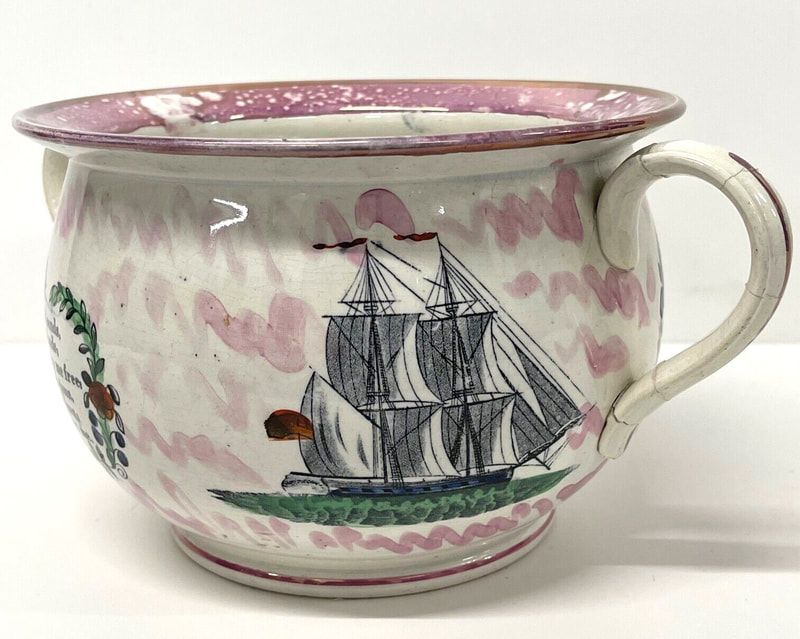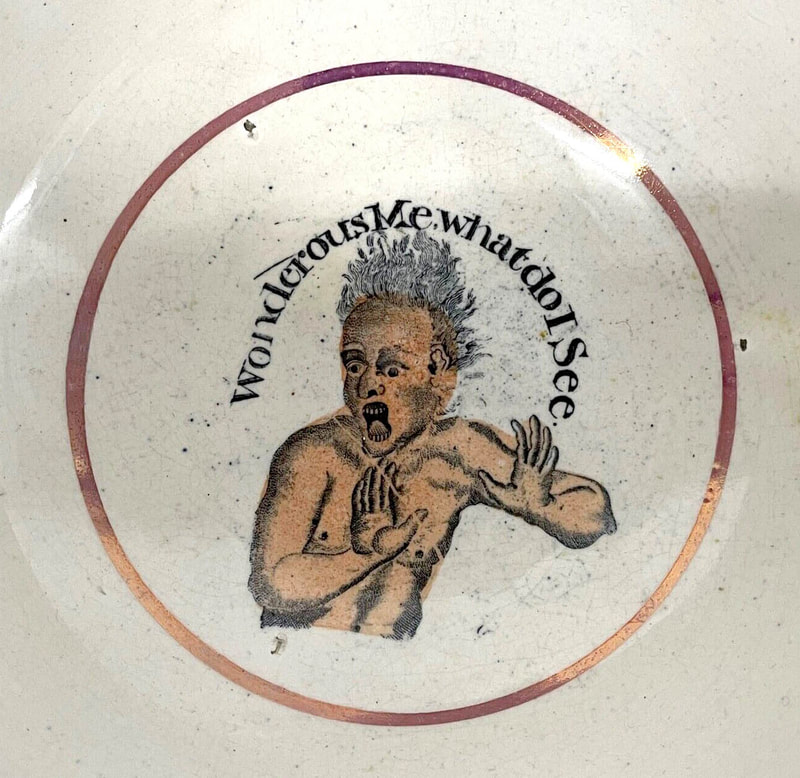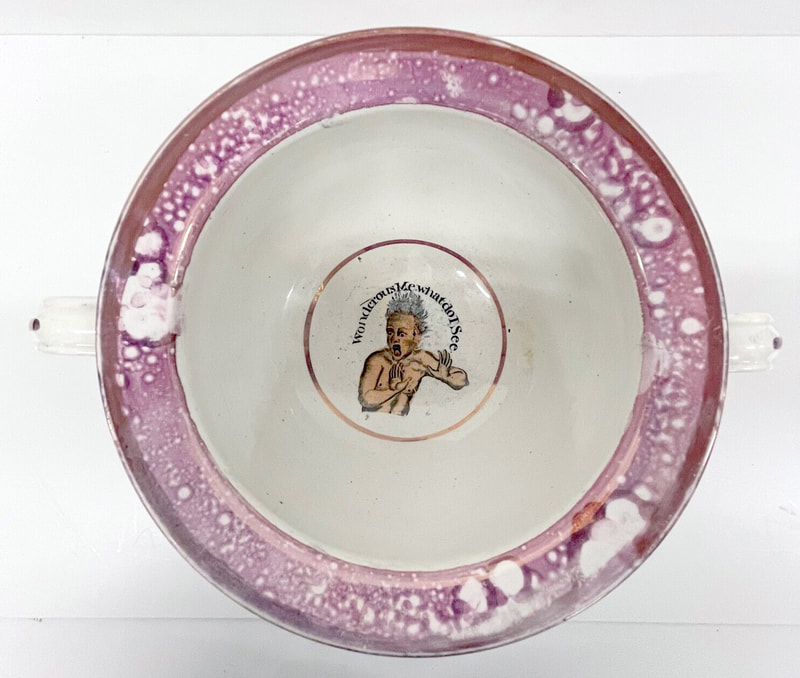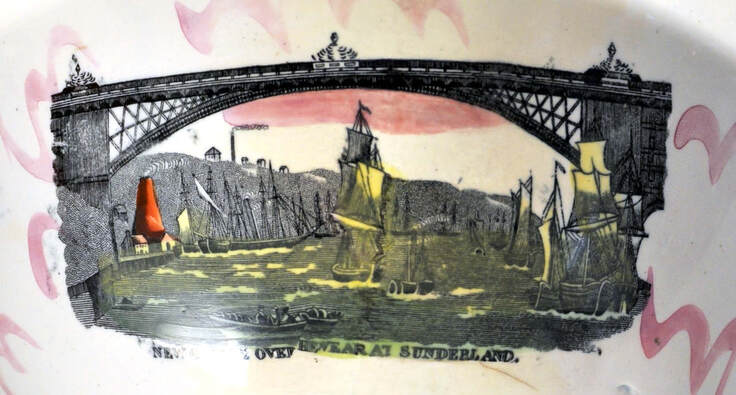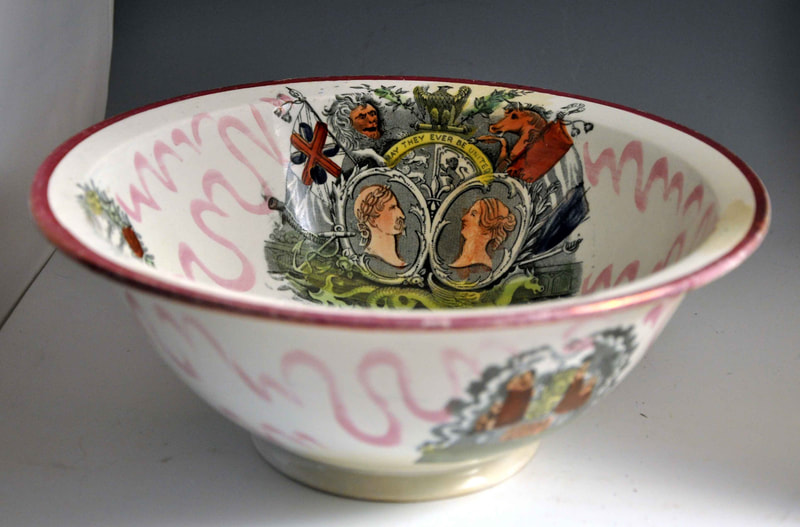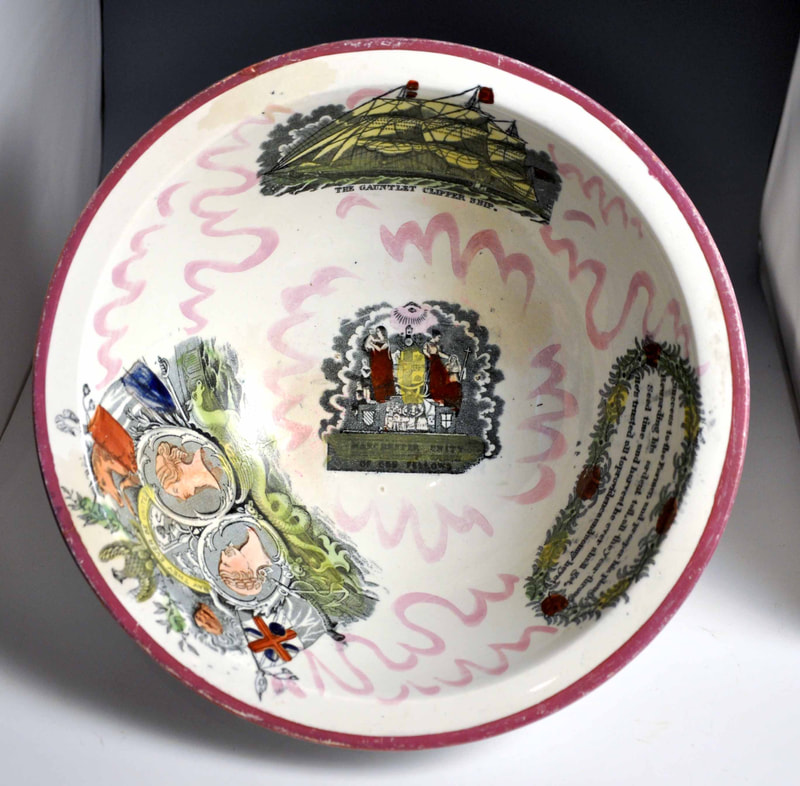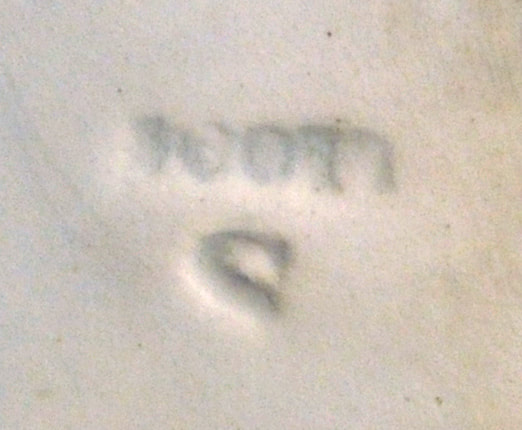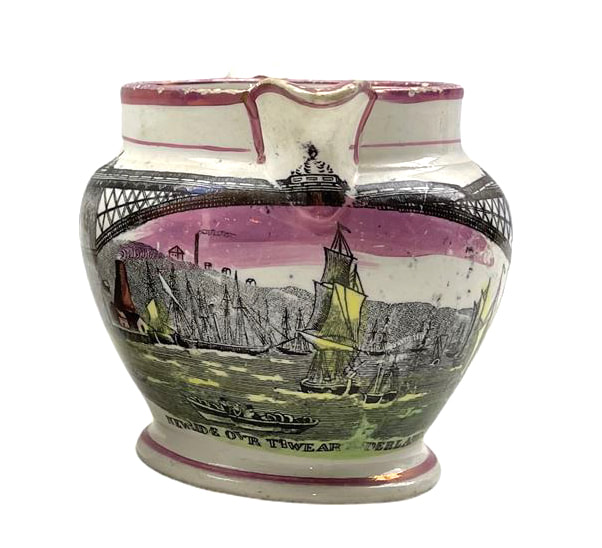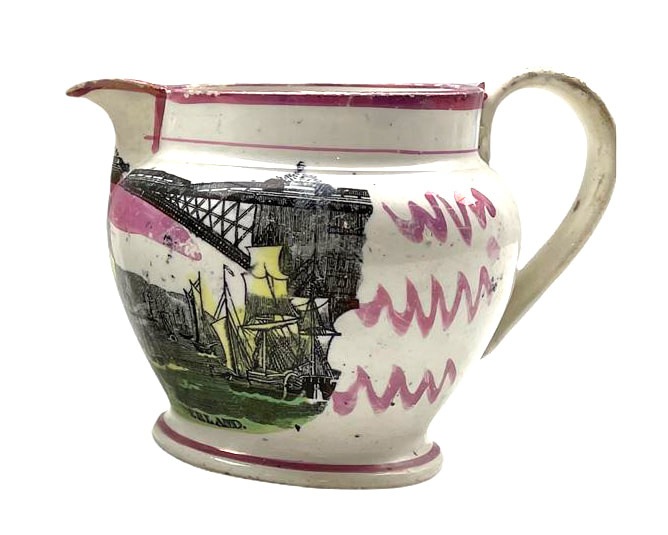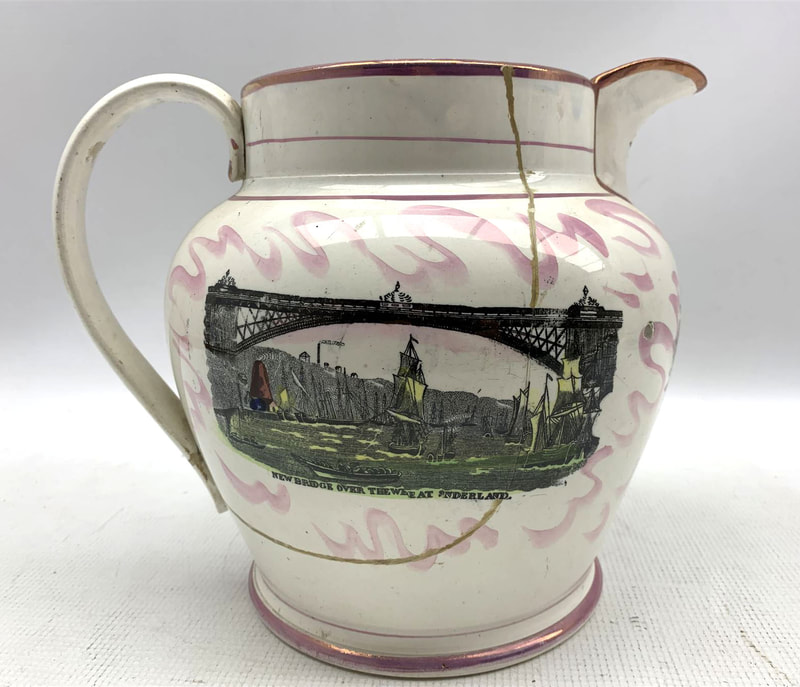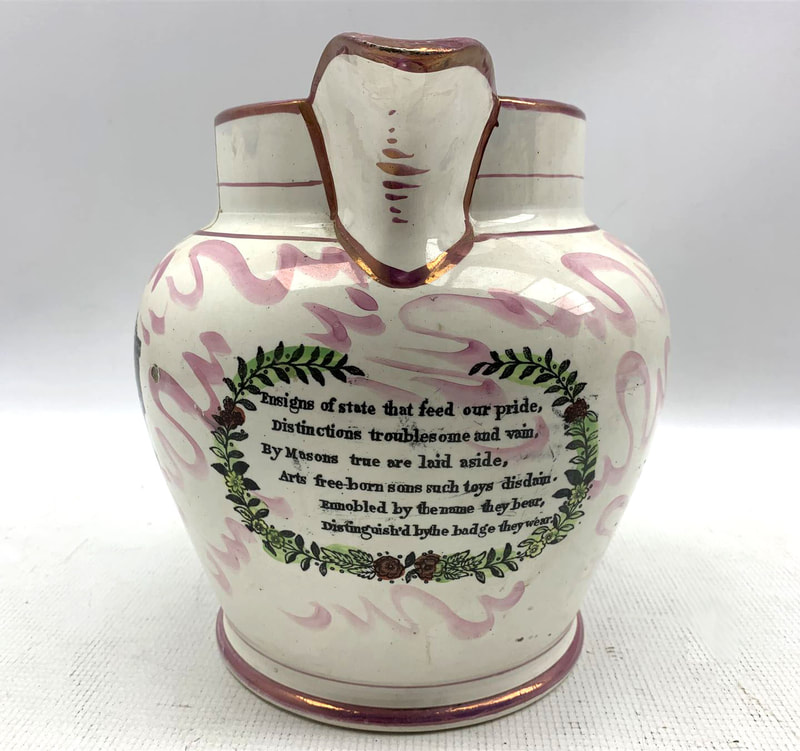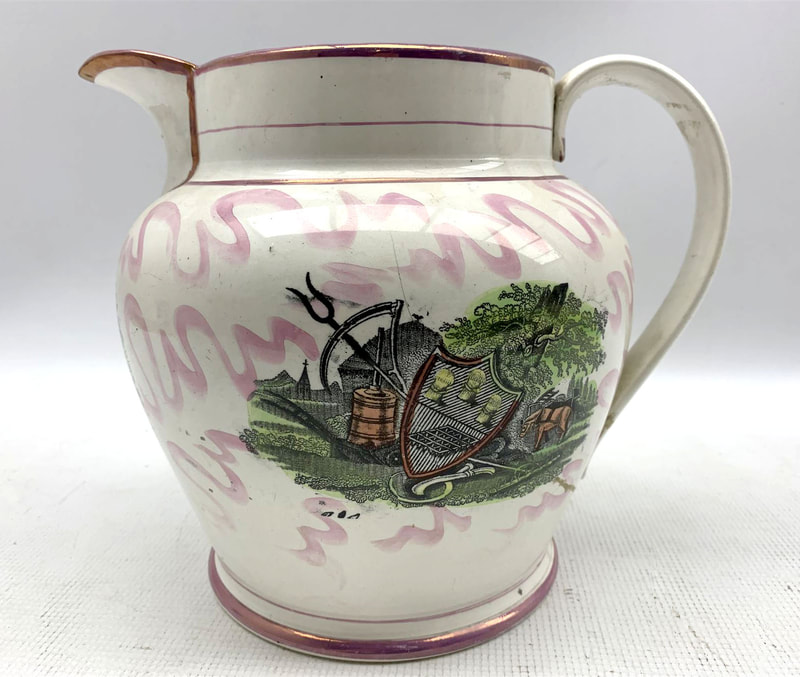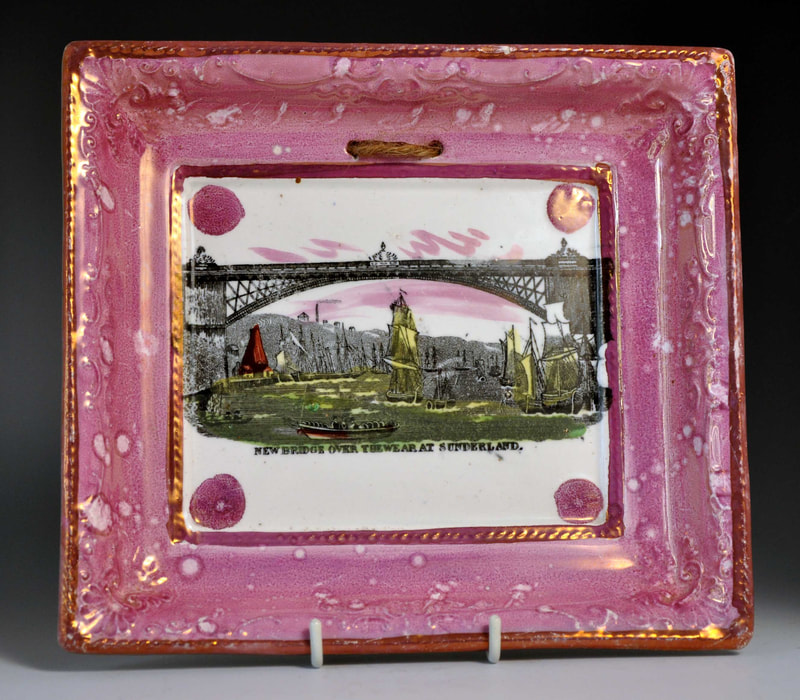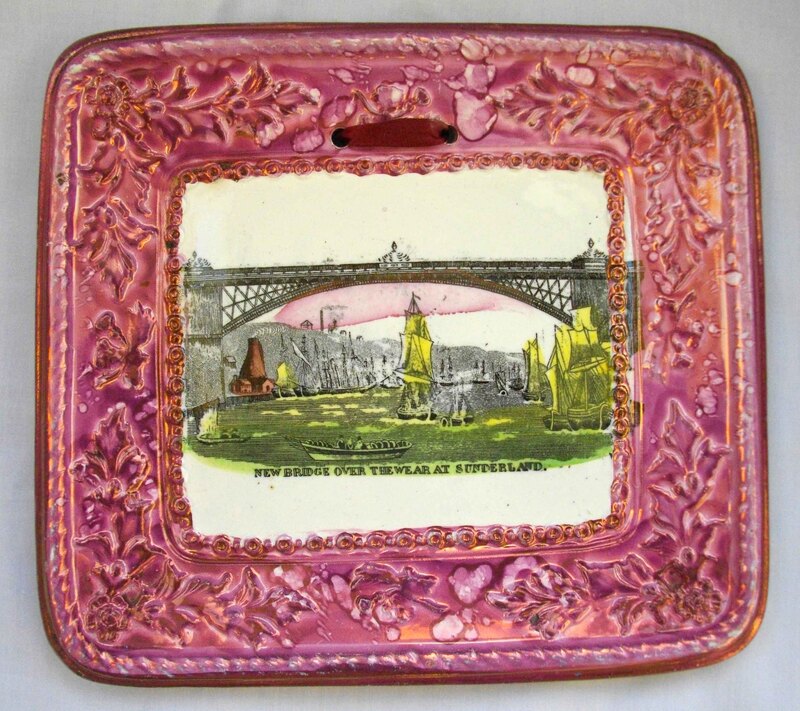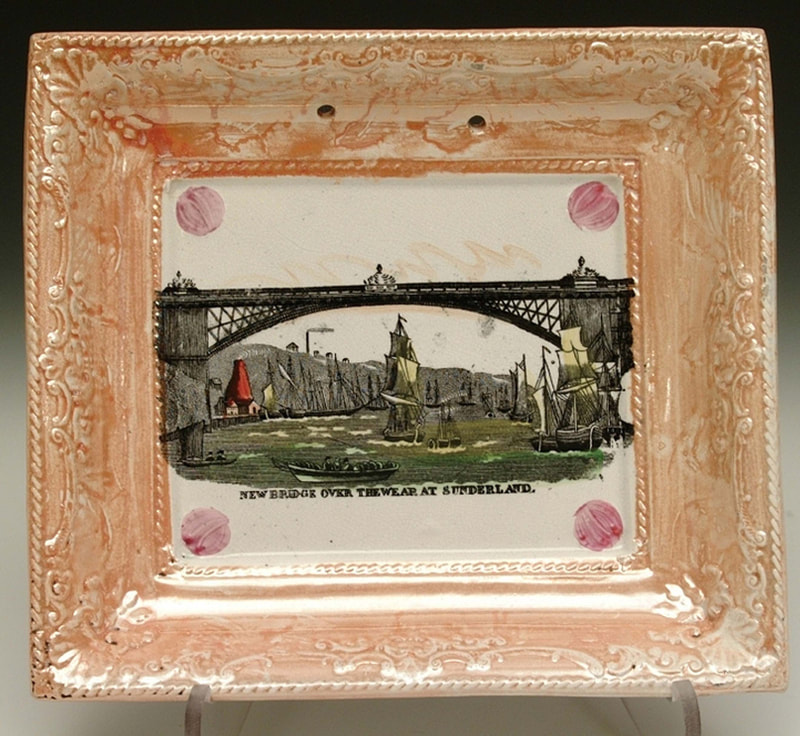New Bridge Over the Wear at Sunderland
Robert Stephenson remodelled the Sunderland bridge between 1857 and 1859. It opened for use in 1859. Stephenson flattened the previously curved top of the bridge by raising the abutments.
|
There is a copper plate with this transfer in the Sunderland Museum & Winter Gardens, Tyne & Wear Archives & Museums collection, donated by the Ball family. The transfer plate appears to have been acquired by Scott's Southwick Pottery from Dixon when the Garrison Pottery closed in 1865 and re-engraved in places. It was later acquired by Ball's Deptford Pottery, although I am yet to record an example from that pottery. See the Gauntlet Clipper page for another transfer from this copper plate. Moore's Wear Pottery also had a version of the New Bridge transfer.
|
The Moore version (left detail below) has a row of small buildings on the horizon to the right of the central ship's mast. The Dixon (centre below) / Scott (right below) version has no buildings on the horizon to the right of the ship. However, by the time the transfer plate was in use at Scott's, it had been re-engraved and acquired a small scratch on the horizon, shown in the right detail below.
Dixon, Garrison Pottery
The transfer on two typically decorated Dixon jugs, c1860.
A slop bowl without enamels over the transfer.
A lidded eel pot or butter dish with similaryellow enamel decoration to the jugs above.
Moore's Wear Pottery
The transfer as it appears on a very large mug. Note the long row of buildings on the horizon.
The large marked punch bowl below shows that Moore's Pottery used the old and new bridge transfers concurrently on the same objects.
The transfer on a high-collared jug of a shape and large size associated with Moore's.
A typical Moore Chamber pot with the transfer, c1860.
Scott's Southwick Pottery
This is the re-engraved imprint from the copper plate acquired from Dixon's. Note the scratch on the horizon, which also appears on the jugs and three plaques below.
Three plaques of typical Scott form. The right plaque, with orange border c1870, is from the Sunderland Museum & Winter Gardens, Tyne & Wear Archives & Museums collection.
